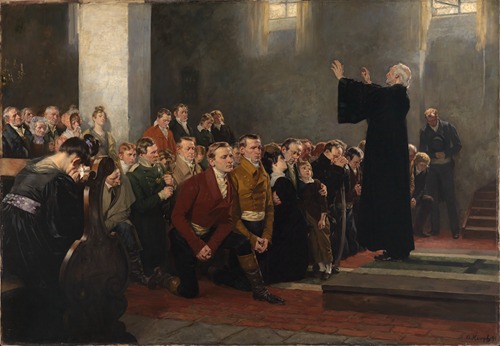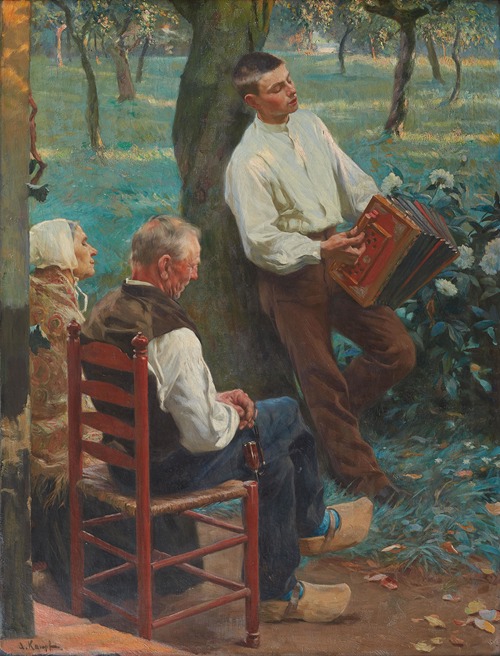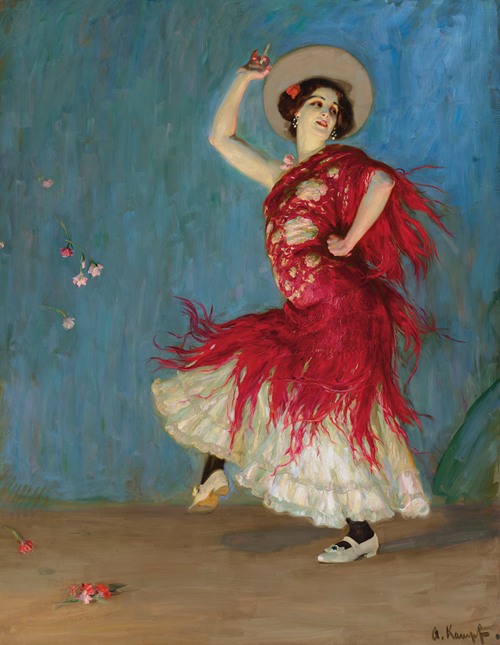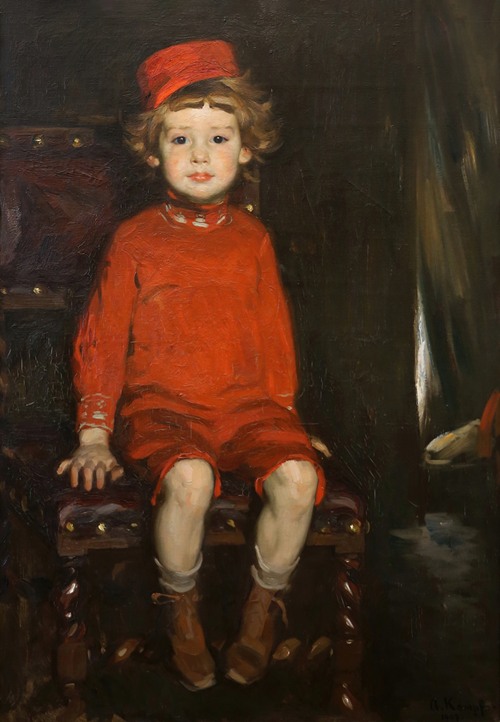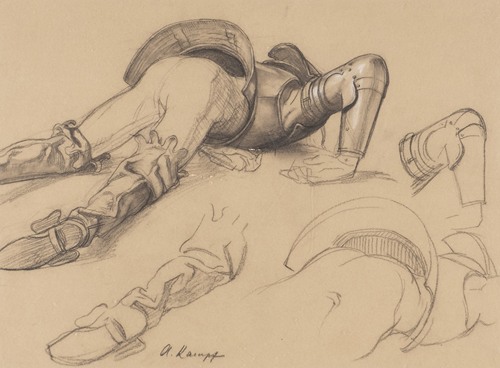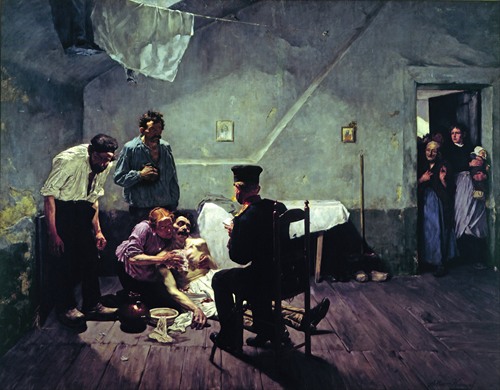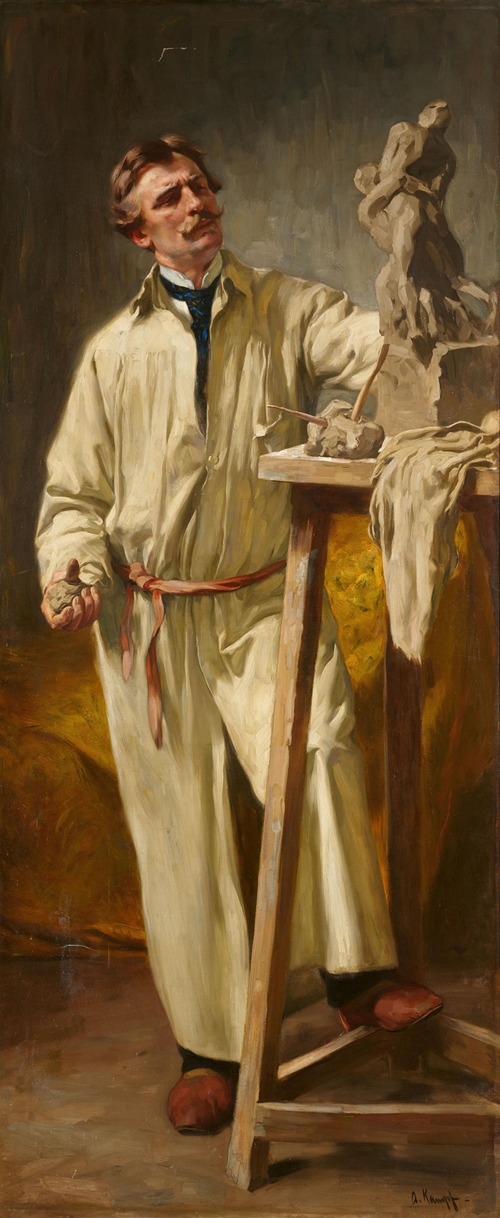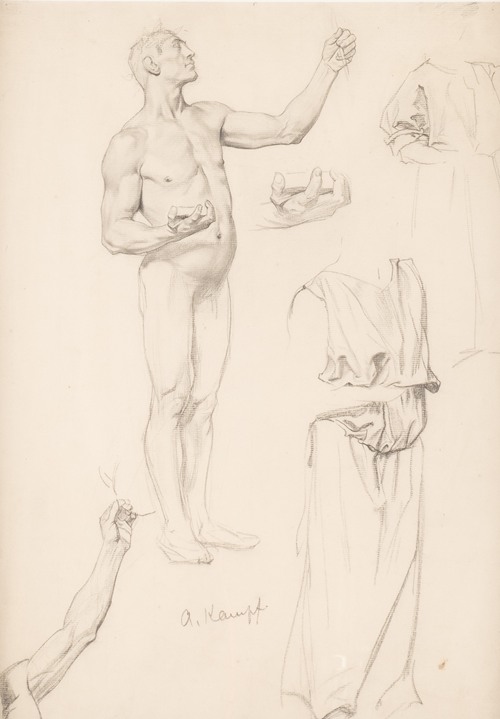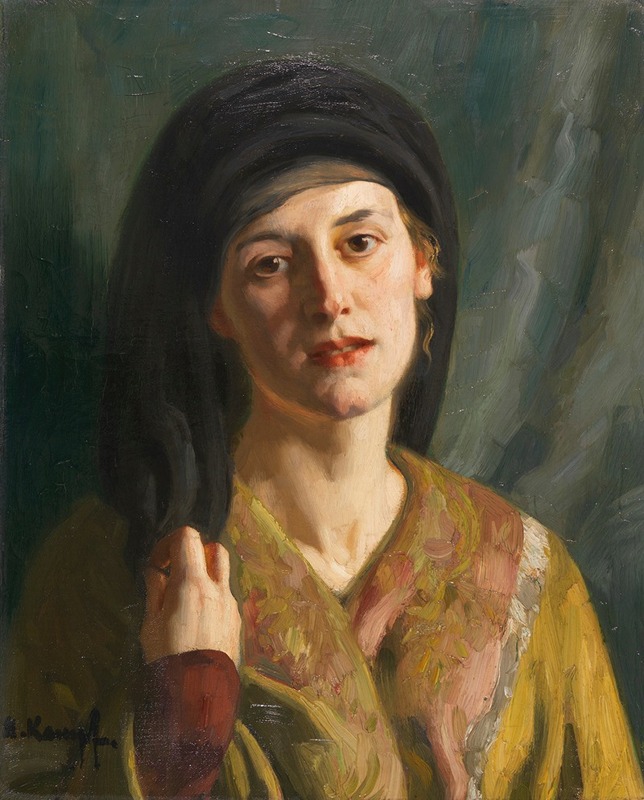
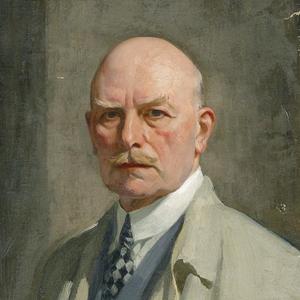
Arthur Kampf was a German painter. He was associated with the Düsseldorf school of painting.
Kampf studied under Peter Janssen, among others, at the Kunstakademie Düsseldorf from 1879 to 1881.
In 1886, Kampf exhibited "The Last Statement." The painting's enormous size (1425 x 1122 in.) and controversial subject matter brought Kampf instant fame, and laid the foundation for the types of works he would be characterized by for the rest of his career.
In 1888, a second painting: Exhibition of remains of Emperor William I in Berlin solidified Kampf's artistic renown as a painter specializing in historical documentation.
After completing his education, he became a professor at the Kunstakademie and taught there until 1889, when he moved to Berlin. There he continued to teach at the local Kunstakademie.
In 1911, Kampf was assigned the role of creating the German pavilion at the International Art Exposition of Rome.
In 1914, Kampf and art historian, Ludwig Justi created the "Künstler Club," a social group of prominent German artists: Max Liebermann, Max Slevogt, Hugo Lederer, Louis Tuaillonn, Gaul, Fritz Klimsch, architect Ludwig Hoffmann, musicians, Richard Strauss and Engelbert Humperdinck, and film director Max Reinhardt.
From 1915 to 1924, he was president of the Hochschule für Bildende Künste in Berlin. He also became a member of the Prussian Academy of Arts, and gave drawing lessons, notably to Prince August Wilhelm, son of Wilhelm II.
The Nazi regime in Germany actively promoted and censored forms of art between 1933 and 1945. Upon becoming dictator in 1933, Adolf Hitler gave his strong personal artistic preferences for classical and heroic themes the force of law to a degree rarely known before. After the Nazis seized power; Kampf became a member of the Nazi Party, his fluency with traditional German art styles and expertise at creating large scale murals allowing him to become one of the regime's contract artists.
In 1939's "Great German Art Exhibition" (Große Deutsche Kunstausstellung) at the Haus der Kunst in Munich, he was represented by numerous works, including The Struggle of Light Against Darkness, on loan from the Reich Chancellery.'The same year, he received the Adlerschild des Deutschen Reiches with the inscription: "To the German painter" (Dem deutschen Maler).
Celebrated for his life's work of paintings, many of which concerned aspects of German history, Kampf was, on the occasion of his 75th birthday, added to the so-called "List of Immortals" (1939). This guaranteed him immunity from interference in artistic work during the Second World War.
In 1944, at the age of 79, Kampf was one of 24 artists, architects, authors, composers, actors, and singers added to the Gottbegnadeten list, meaning he was considered absolutely indispensable to German culture.
In May 1944, Kampf went to the village of Lower Silesia after Berlin was evacuated during bombings by Allied Forces. In Lower Slesia, Kampf's wife, Mathilde was killed in a traffic accident.
Shortly before his death in 1950, at the age of 85, Kampf published a memoir called Aus Meinem Leben.
Throughout his life, Kampf held membership in the Association of Rhine-Westphalian Artists (honorary membership), the Society of German Watercolorists and the Association of German Illustrators, and he belonged to the Society of Berlin Artists in Berlin (1900-1930). In Düsseldorf, Kampf belonged to the Malkasten Artists‘ Society (1887-1898, honorary member since 1947), the St. Luke’s Artist’s Club (1892-1903), the Society of Düsseldorfer Artists, and to the Free Federation of Düsseldorf Artists.
Kampf's father, August Kampf was an Aachen painter and Imperial court photographer. Kampf's older brother, Eugen, was also a well known painter.
